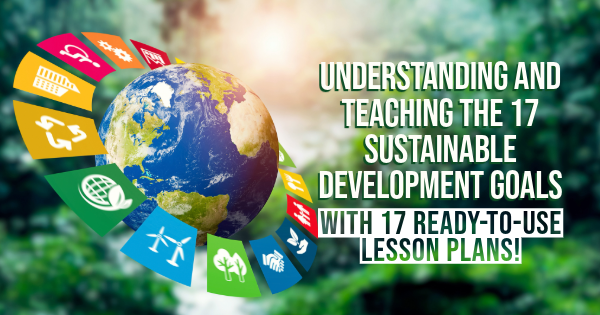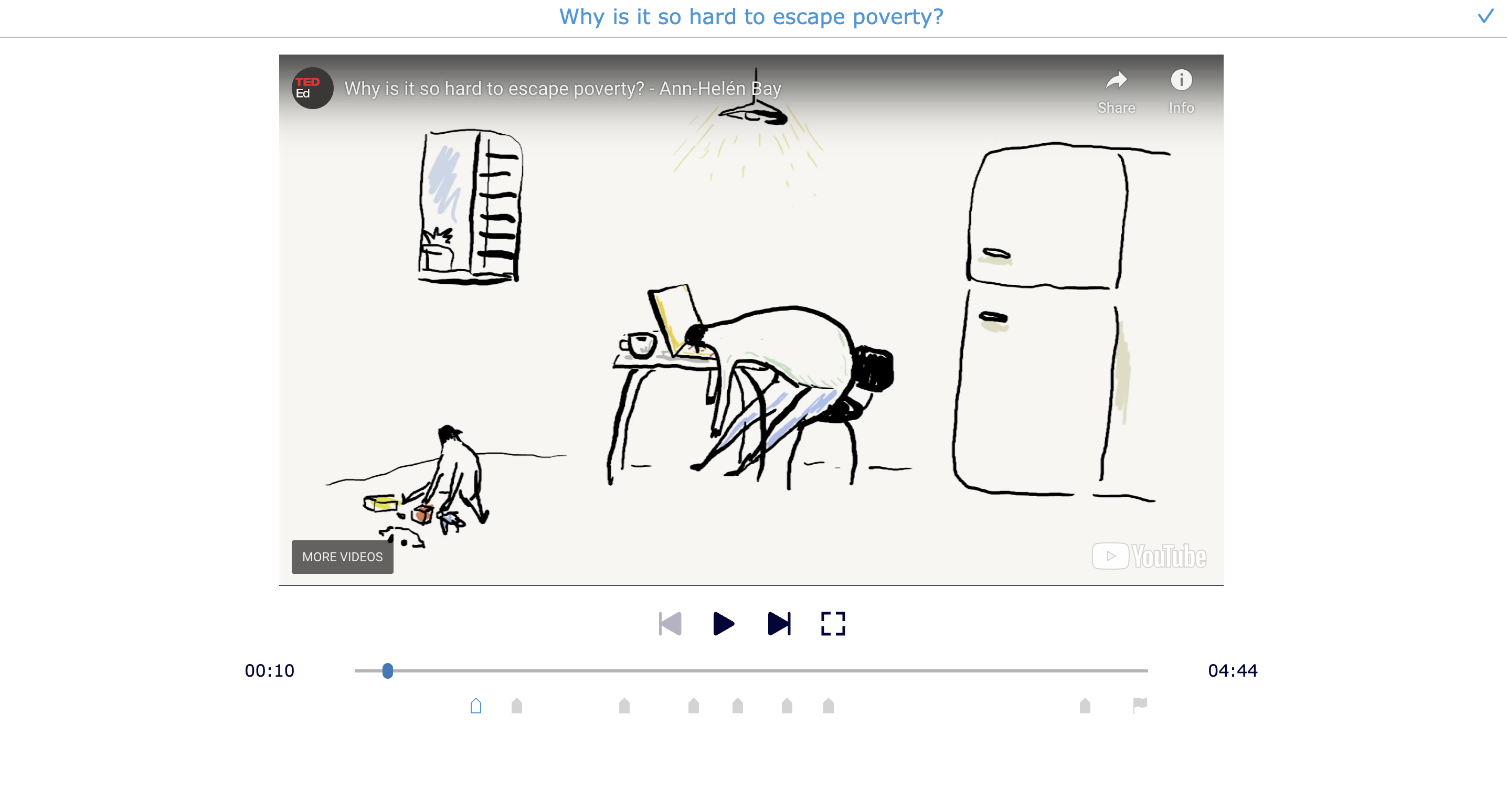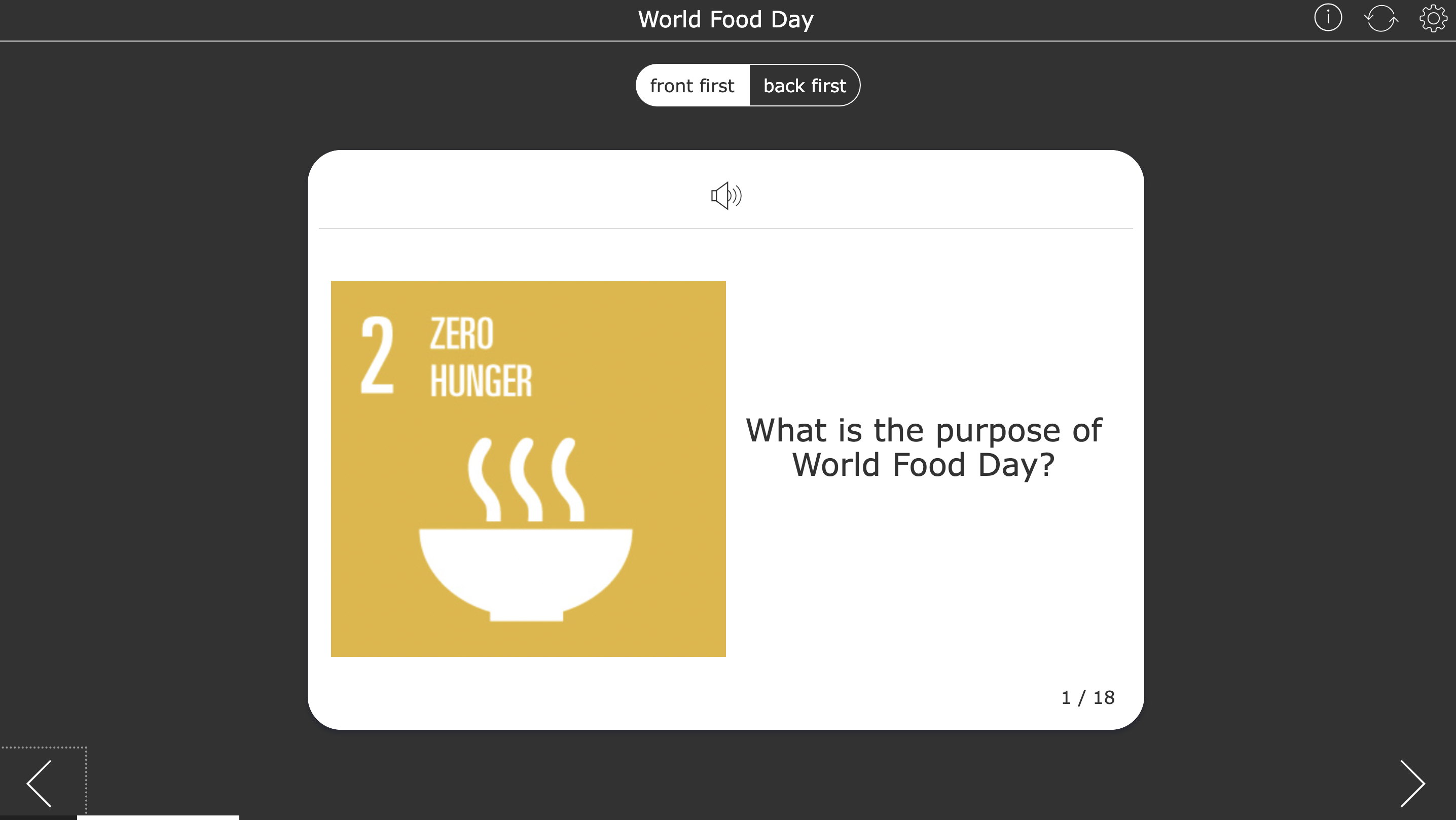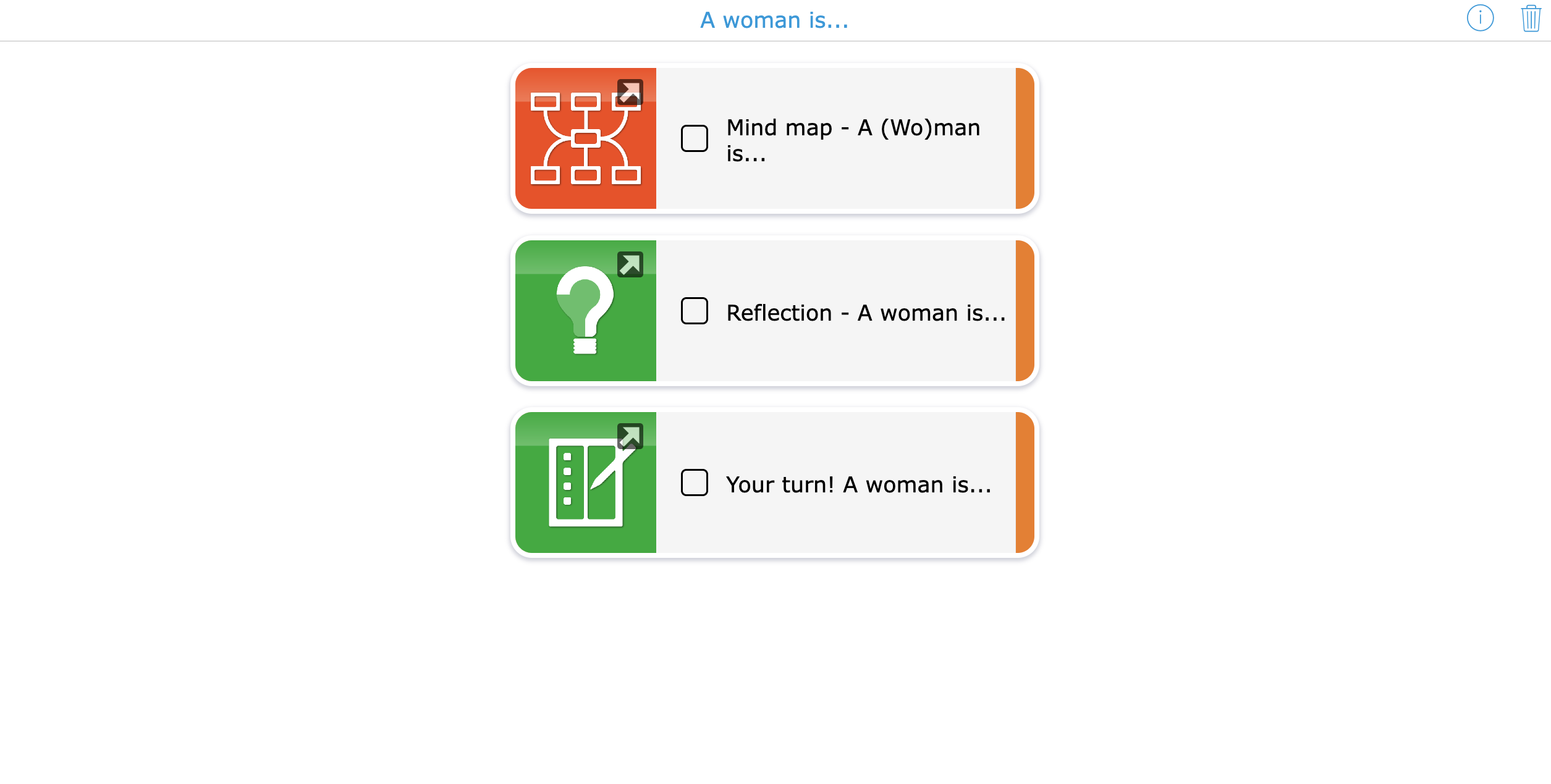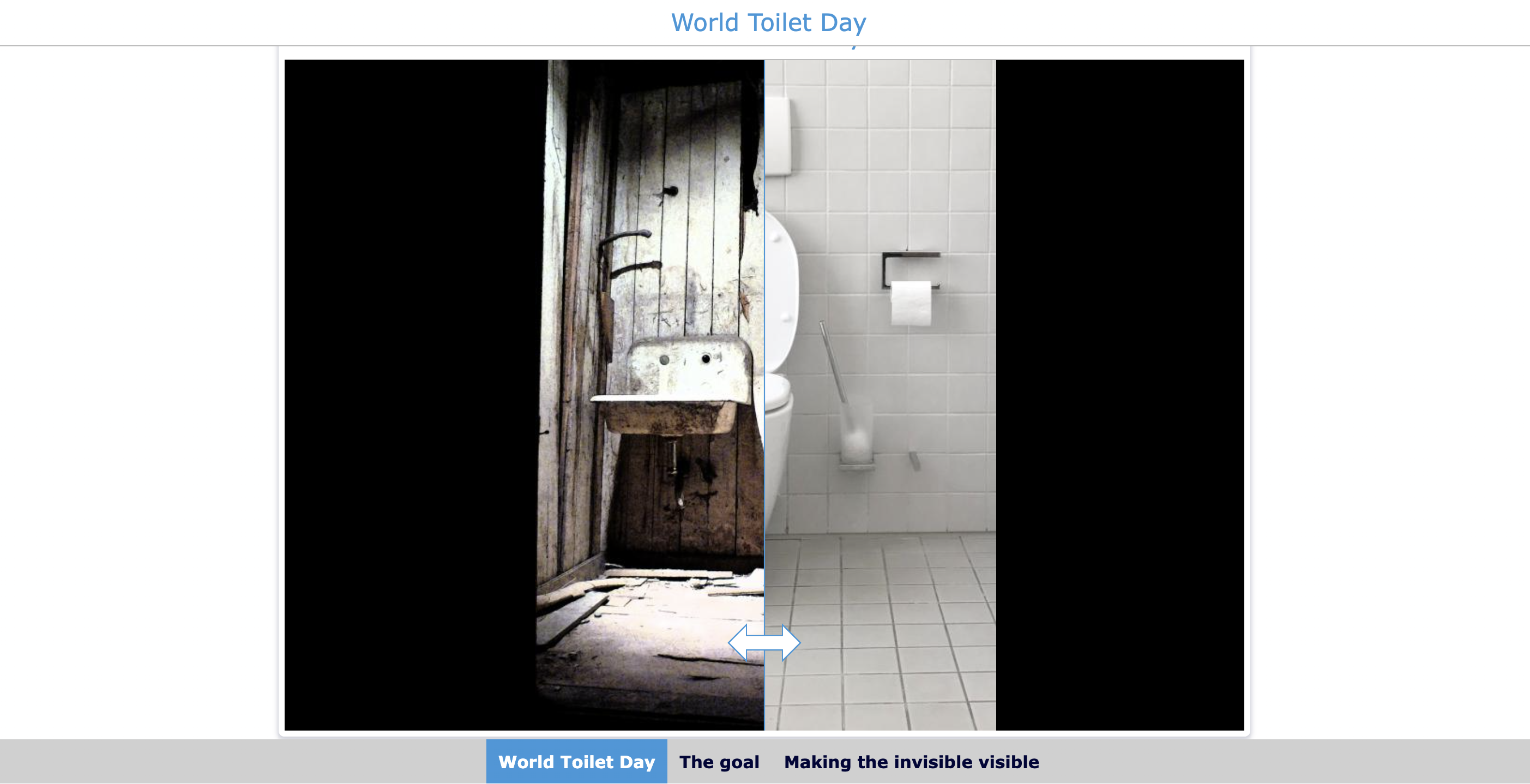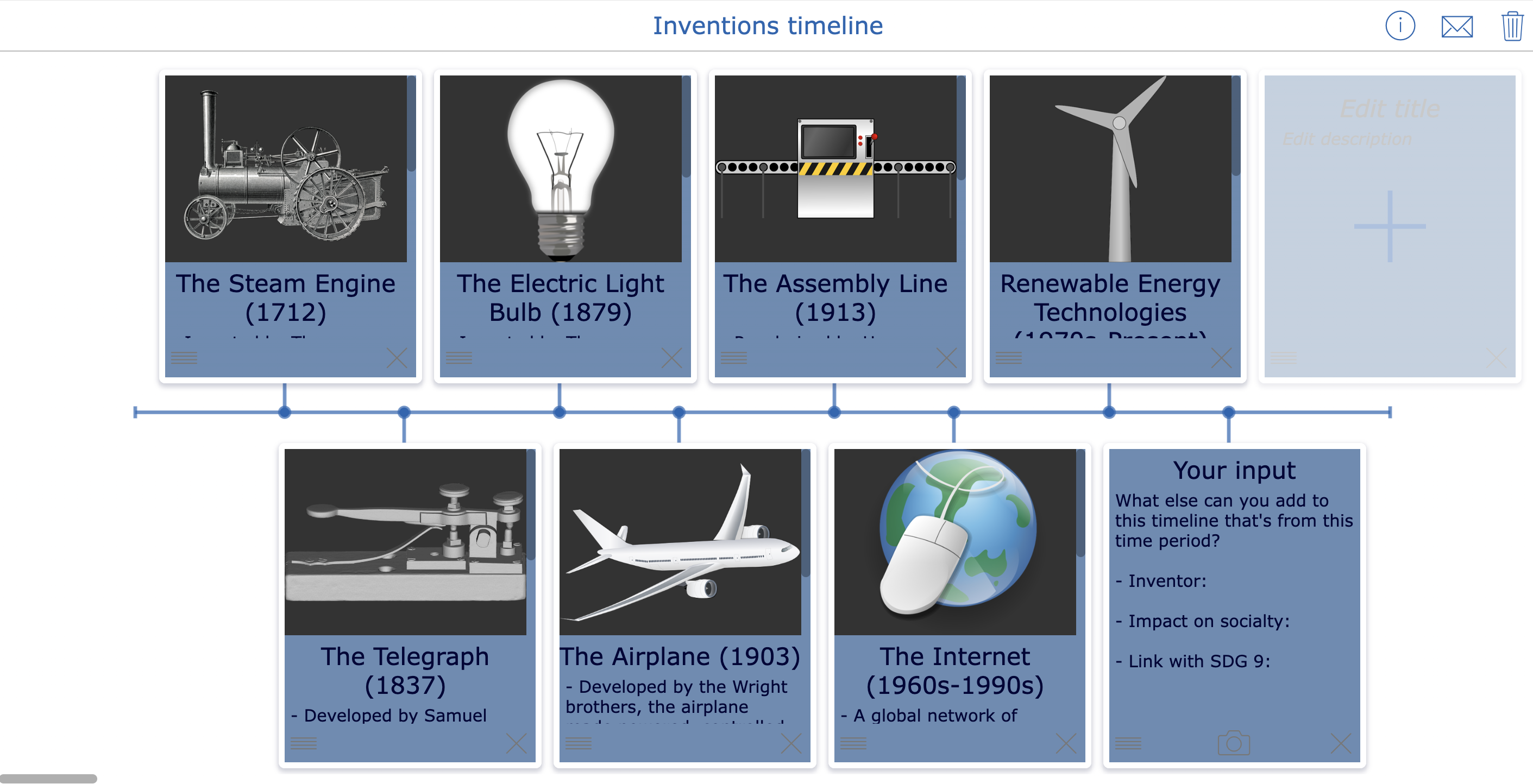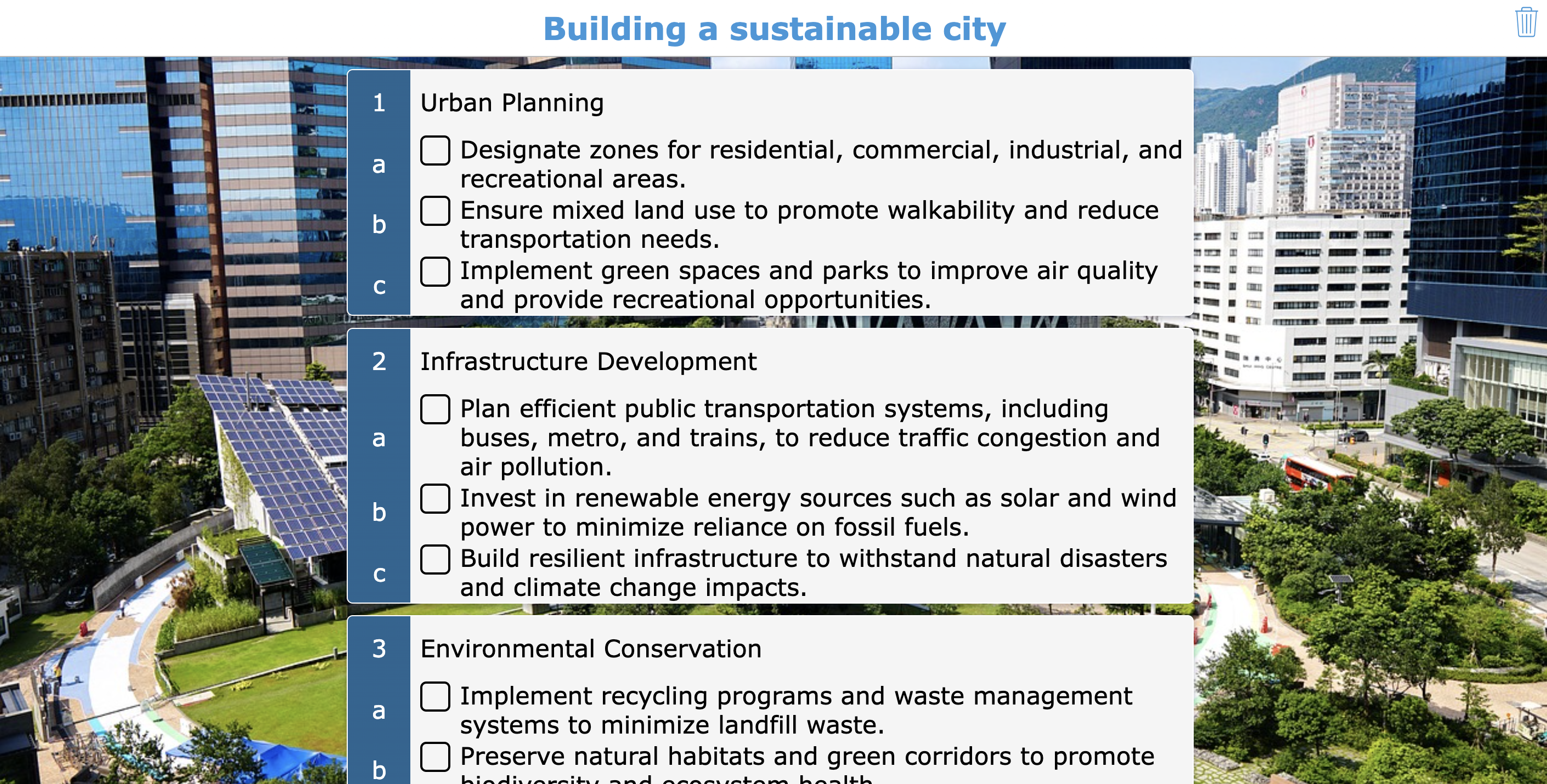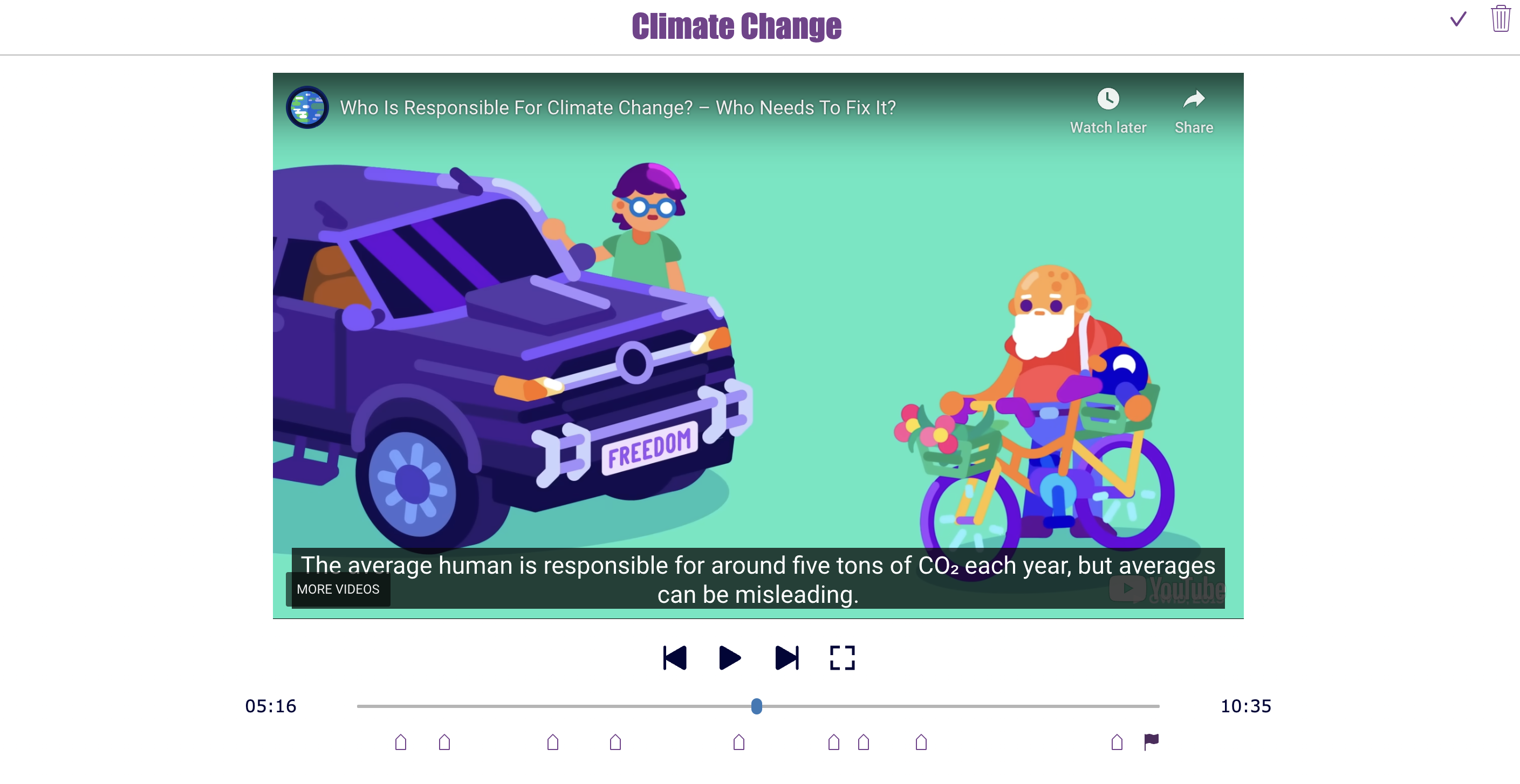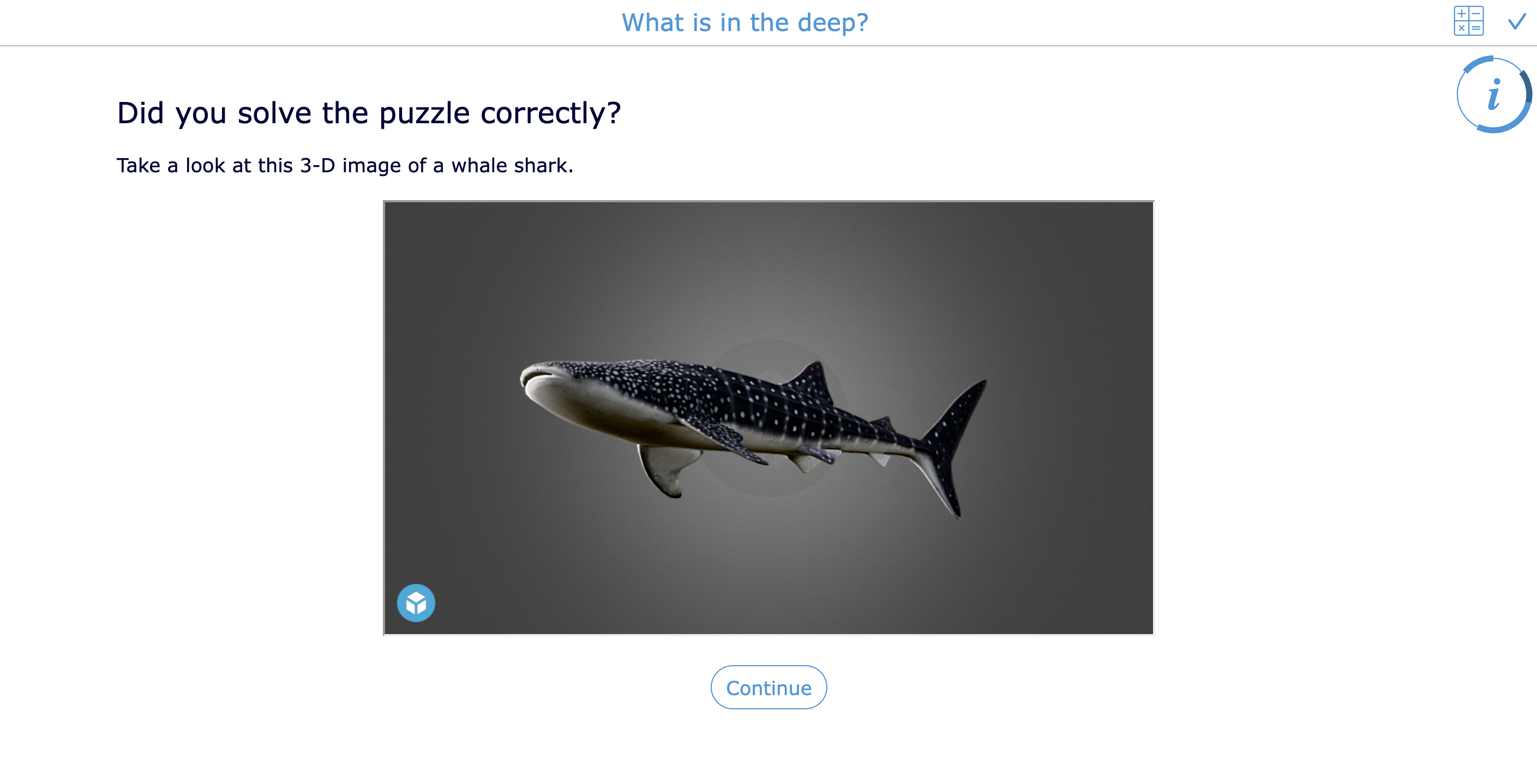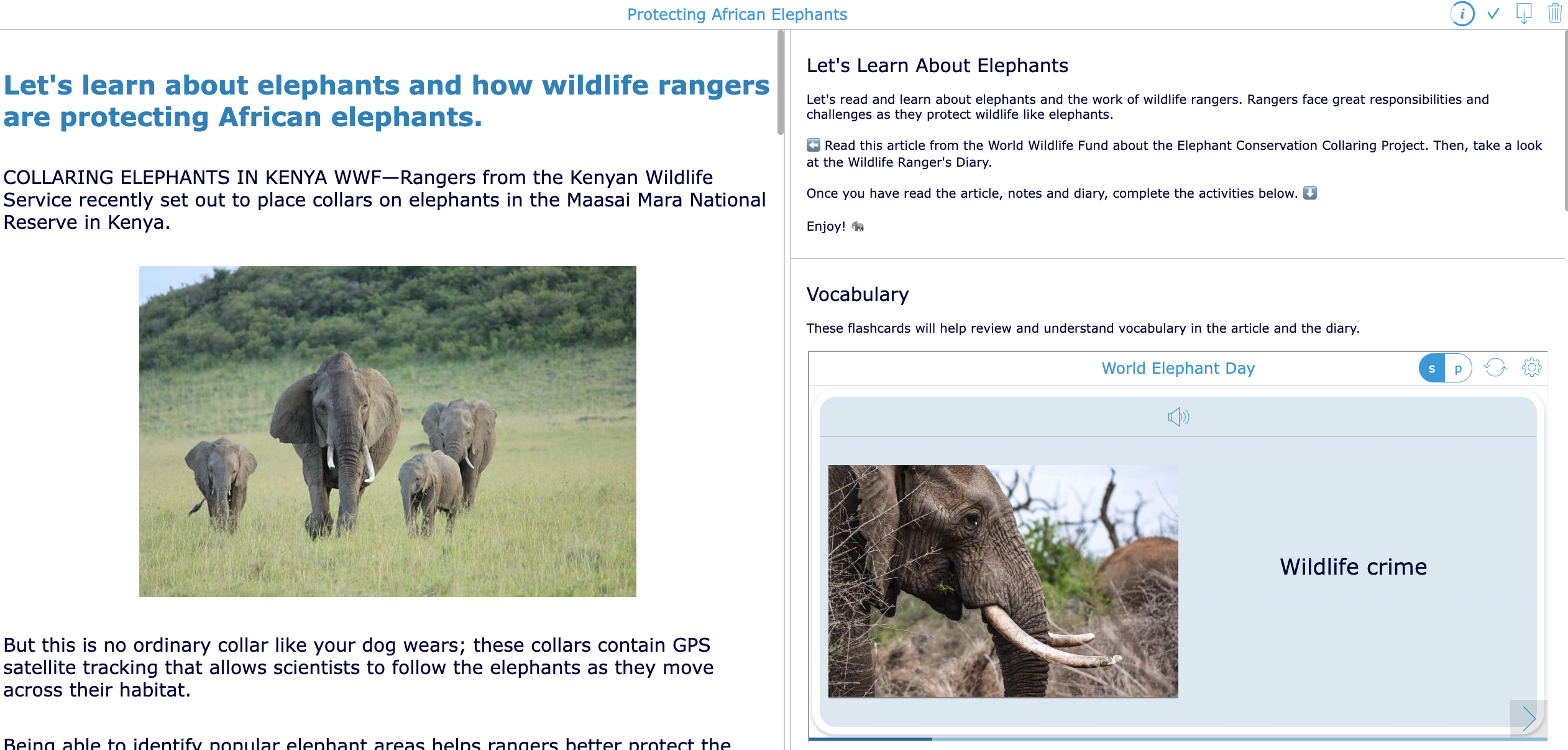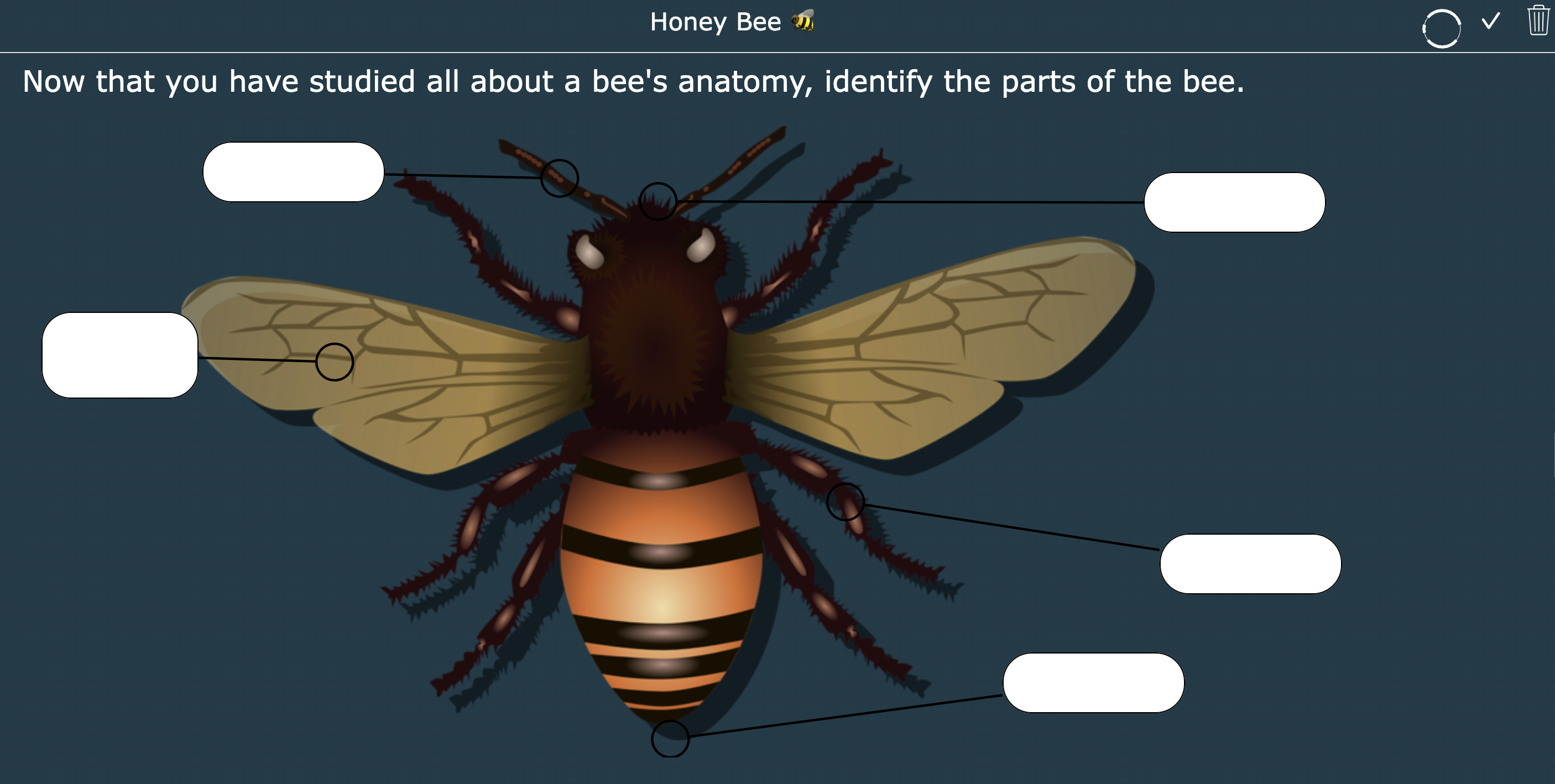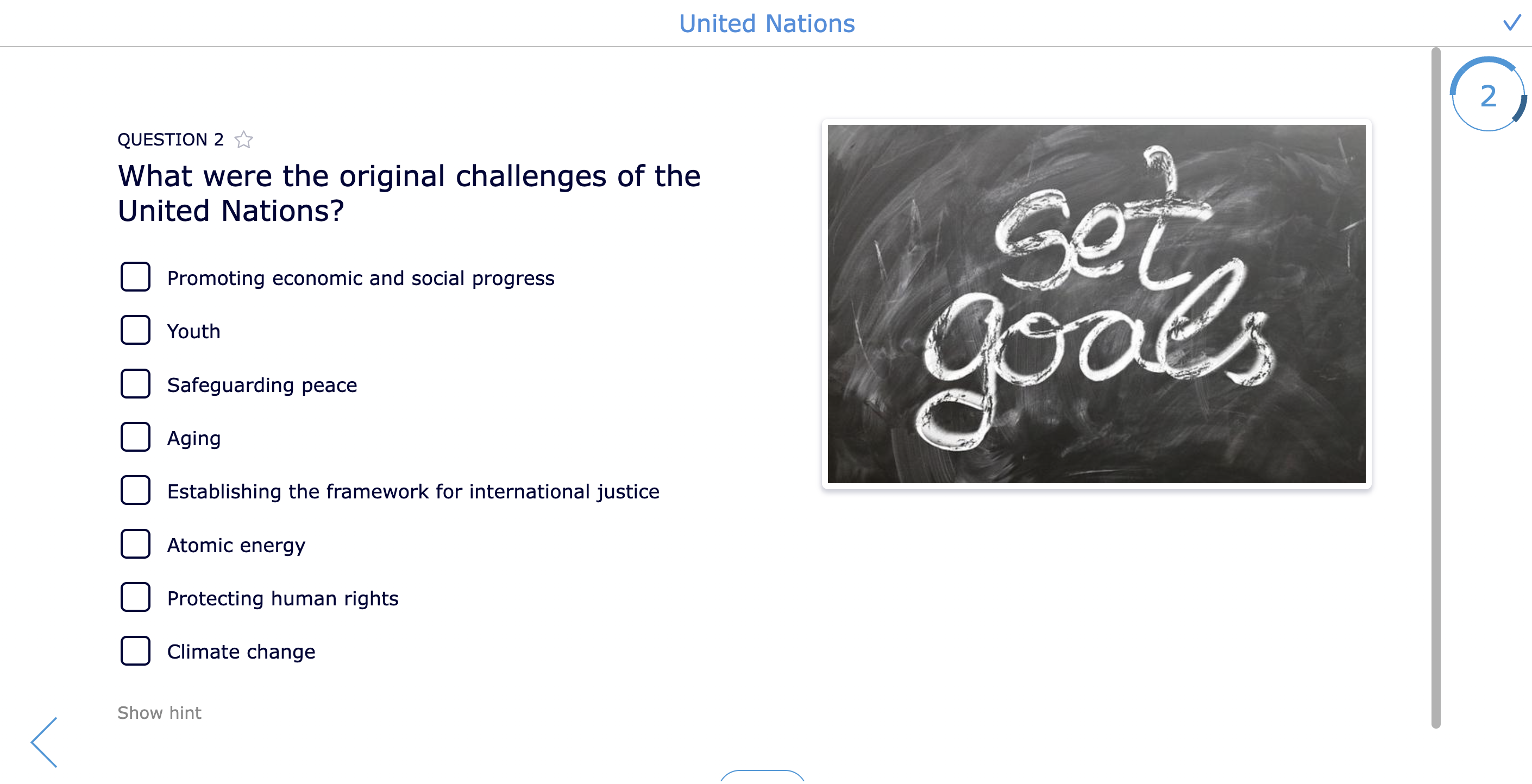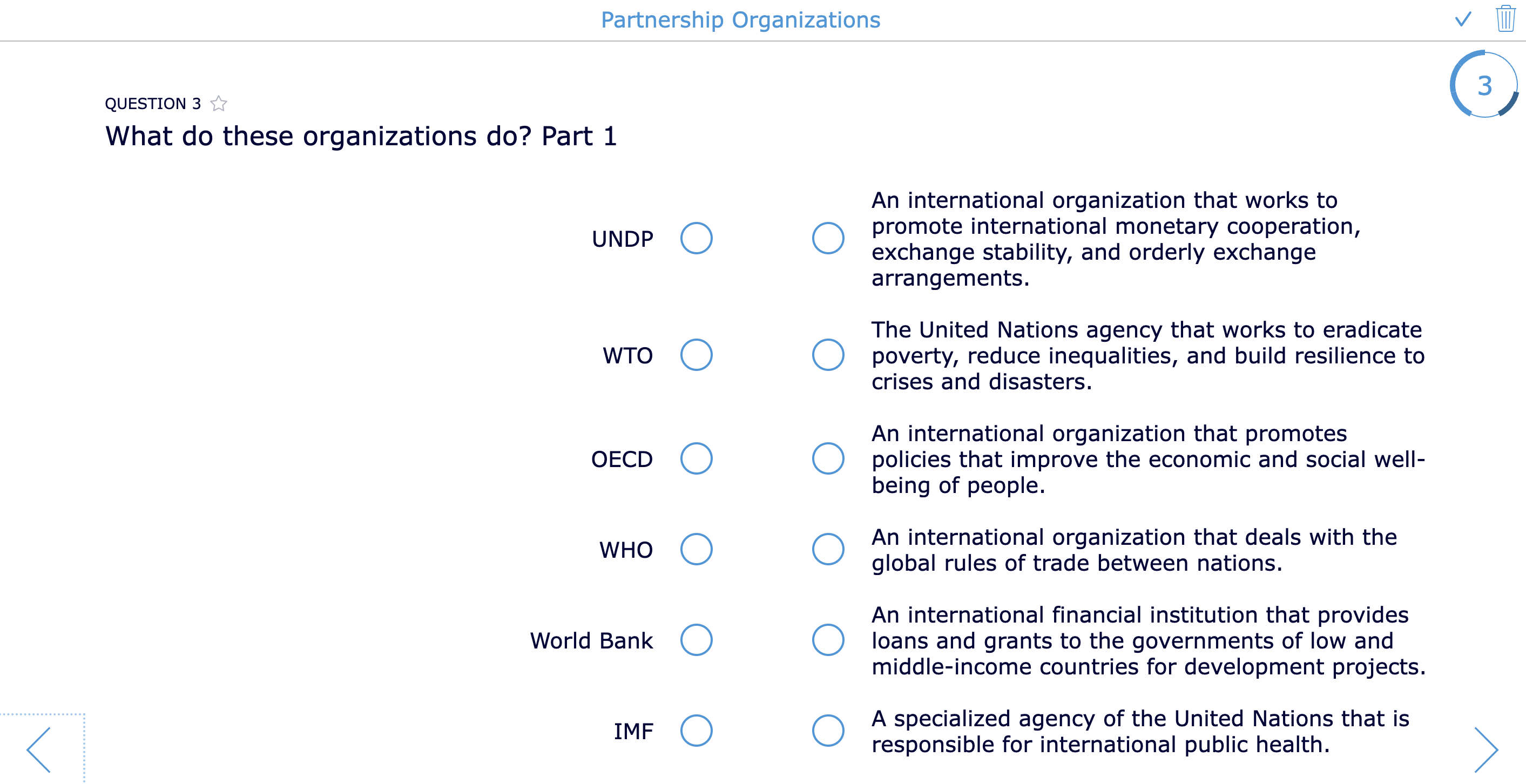Understanding and Teaching the 17 Sustainable Development Goals (SDGs)
 Lucie Renard —
Lucie Renard —
The Sustainable Development Goals (SDGs) are a set of 17 ambitious global objectives established by the United Nations in 2015. These goals aim to address pressing global challenges such as poverty, inequality, climate change, environmental degradation, peace, and justice. Achieving these goals by 2030 is crucial for ensuring a better and more sustainable future for all.
In this blog post, we delve into each goal, explain its importance, and provide engaging lesson ideas to help educators teach these critical concepts. I will also share a ready-to-use lesson on each SDG.
These lessons are created with BookWidgets - a content creation and evaluation tool for teachers - and are all listed in this group folder. All you need to do is to create a free account so you can duplicate the lessons, alter them if needed, and share them with your own students.
💡 While in this blog post, we go over each SDG individually, make sure to check our previous blog post with ready-to-use lesson activities on the SDGs in general. It’s a good idea to use some of the SDG activities mentioned in that post as a lesson starter, to raise awareness, before diving into each Sustainable Development Goal.

SDG 1. No Poverty
Problem
Over 700 million people, or 10% of the world’s population, still live in extreme poverty, struggling to meet the most basic needs like health, education, and access to water and sanitation.
Goal
End poverty in all its forms everywhere.
BookWidgets lesson
This video quiz activity explains why it’s hard to escape poverty and is directly related to Sustainable Development Goal 1, which aims to end poverty in all its forms everywhere. This activity can help your students understand the complex factors that contribute to poverty and the poverty traps. By engaging with the content, learners can gain insights into the systemic barriers that prevent individuals from overcoming poverty. This educational activity fosters a deeper understanding of the multifaceted nature of poverty and promotes actions to eradicate it, aligning with the objectives of SDG 1. It’s the perfect introduction for students to discuss poverty and to think of possible solutions.
More Lesson Ideas
- Poverty Simulation: Create a classroom simulation to illustrate the daily challenges faced by those living in poverty.
- Budgeting Exercise: Teach students how to budget a small amount of money for essentials like food, shelter, and healthcare.
- Global Poverty Map: Have students research and create a world map highlighting areas with the highest poverty rates.
- Local Charity Project: Partner with a local charity to organize a fundraising event or a food drive.
- Poverty Solutions Debate: Hold a debate on different strategies to alleviate poverty and their potential impacts.

SDG 2. Zero Hunger
Problem
Nearly 690 million people are hungry, and this number is rising due to conflict, climate change, and economic downturns.
Goal
End hunger, achieve food security and improved nutrition, and promote sustainable agriculture.
BookWidgets lesson
This flashcard activity showing different foods around the globe directly relates to Sustainable Development Goal (SDG) 2, which aims to achieve zero hunger. This activity can raise awareness about global food diversity and the importance of nutritious diets, highlighting how different cultures address food security and nutrition. The activity is a lesson starter to open the conversation and a classroom discussion on SDG 2. By learning about various foods, students can better understand the challenges and solutions related to hunger and malnutrition in different regions. This activity can also promote the importance of sustainable agricultural practices that support local food production and reduce food waste. Ultimately, educating your students about global foods fosters a deeper appreciation for efforts to end hunger and ensure food security for all, aligning with the objectives of SDG 2.
More Lesson Ideas
- School Garden: Start a school garden to teach students about growing their own food.
- Nutritional Workshop: Invite a nutritionist to speak about the importance of a balanced diet and food security.
- Global Hunger Analysis: Research and present on countries suffering from severe hunger issues and possible solutions.
- Cooking Class: Teach students how to prepare healthy, budget-friendly meals.
- Food Waste Audit: Conduct an audit of food waste in the school cafeteria and brainstorm ways to reduce it.

SDG 3. Good Health and Well-being
Problem
Millions die annually from preventable diseases and lack of access to healthcare. Mental health issues are also on the rise globally.
Goal
Ensure healthy lives and promote well-being for all at all ages.
BookWidgets lesson
This digital lesson takes a bit less than 1 hour and tackles the importance of celebrating World health Day. Your students will go through a video and some engaging quizzes testing, and sharing knowledge about this sustainable development goal. Tackling this goal on April 7, World Health Day, is a very good approach.
💡 In this blog post we also share more ready-to-use lesson activities to promote a good mental health and student well-being. Discussing this topic in your classroom can be very delicate, so think things through. But it is something you can’t deny. That’s exactly what this SDG is trying to achieve: focus on mental health and well-being and finding ways to help people who need help.
More Lesson Ideas
- Mental Health Awareness: Organize workshops focusing on mental health and coping strategies for stress.
- Physical Activity Day: Plan a day dedicated to physical activities like sports, yoga, or dance.
- Health Habits Journal: Have students keep a journal of their daily health habits and set goals for improvement.
- Guest Speaker Series: Invite healthcare professionals to talk about various aspects of health and wellness.
- First Aid Training: Provide basic first aid training to students.

SDG 4. Quality Education
Problem
Over 260 million children and youth are out of school, and many who are in school are not receiving a quality education.
Goal
Ensure inclusive and equitable quality education and promote lifelong learning opportunities for all.
BookWidgets lesson
What better way to teach your students about SDG 4, quality education, than to bring attention to it on International Day of Education. The United Nations General Assembly declared January 24th as the International Day of Education. UN Sustainable Development Goal #4 - Quality Education - highlights the importance of “inclusive and equitable quality education…for all”. Use a WebQuest widget, with an included Mind Map widget to let your students write down their ideas- their take on a Know, Want to Know, Learn activity. Then, explore a Timeline widget lesson as they learn about International Day of Education and why it is important for everyone. All the teaching resources for International Day of Education are included here.
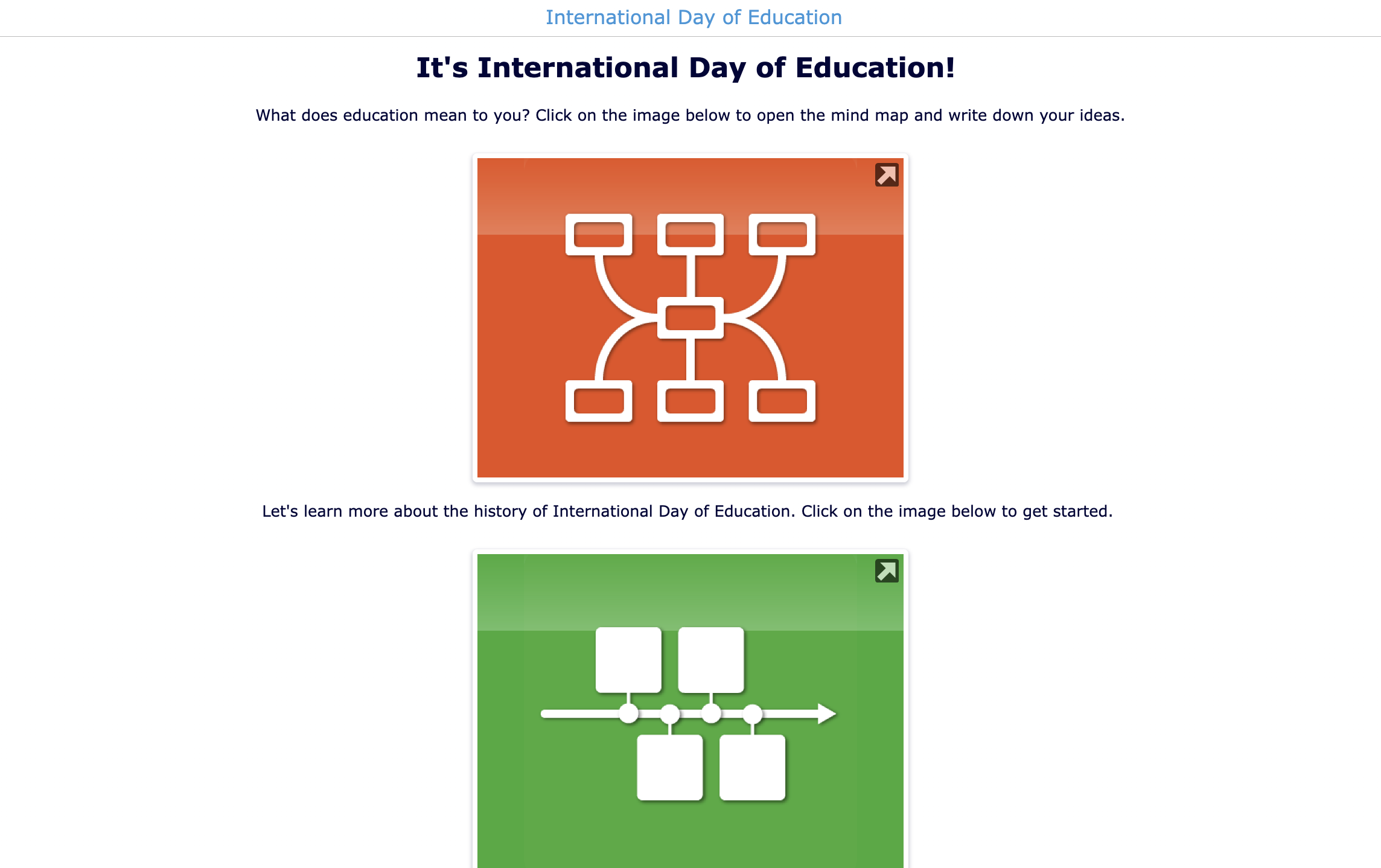
More Lesson Ideas
- Inclusive Classroom Practices: Discuss and implement strategies to make the classroom more inclusive for all learning styles and needs.
- Global Education Systems: Research and compare educational systems from different countries.
- Literacy Campaign: Organize a campaign to promote literacy in the community.
- Lifelong Learning Project: Have students interview adults about their experiences with lifelong learning.
- Technology in Education: Explore how technology can enhance learning experiences and outcomes.

SDG 5. Gender Equality
Problem
Women and girls worldwide continue to experience discrimination and violence in every part of their lives.
Goal
Achieve gender equality and empower all women and girls.
BookWidgets lesson
This digital calendar activity holds over 20 digital lesson activities to celebrate Women’s History Month. Instead of focusing on the discrimination and violence women and girls are suffering worldwide, you can also focus on their achievements to honor women all over the world. Women’s History Month is celebrated each year throughout March, but you can also pick some fun individual activities within this blog post listing all separate Women’s History Month lesson ideas, like I did below. In this digital BookWidgets planner activity, your students reflect on what it is to be a woman.
More Lesson Ideas
- Historical Figures: Study influential women in history and their contributions to society.
- Gender Stereotypes Workshop: Discuss and challenge common gender stereotypes.
- Empowerment Project: Develop a project that supports girls’ education and empowerment locally or globally.
- Debate on Gender Policies: Hold a debate on current policies and their impact on gender equality.
- Equality in Media: Analyze representations of gender in media and discuss their implications.

SDG 6. Clean Water and Sanitation
Problem
2.2 billion people lack access to safely managed drinking water, and 4.2 billion people lack safely managed sanitation.
Goal
Ensure availability and sustainable management of water and sanitation for all.
BookWidgets lesson
This lesson about World Toilet Day - November 19 - is directly related to Sustainable Development Goal (SDG) 6, which focuses on ensuring the availability and sustainable management of water and sanitation for all. This lesson can raise awareness about the global sanitation crisis, highlighting the fact that billions of people lack access to safely managed sanitation services. By understanding the importance of toilets in preventing disease and maintaining public health, your students also learn to appreciate what they have. Ultimately, educating your students about World Toilet Day promotes actions to achieve universal access to sanitation, aligning with the goals of SDG 6.
More Lesson Ideas
- Water Filtration Experiment: Teach students about water purification through hands-on experiments.
- Water Conservation Campaign: Create a campaign to promote water conservation in the school and community.
- Sanitation Solutions: Research innovative sanitation solutions and present findings.
- Field Trip: Visit a local water treatment plant to learn about the process of making water safe for consumption.
- Rainwater Harvesting Project: Design a rainwater harvesting system for the school.

SDG 7. Affordable and Clean Energy
Problem
789 million people lack access to electricity, and millions more rely on harmful and polluting energy sources.
Goal
Ensure access to affordable, reliable, sustainable, and modern energy for all.
BookWidgets lesson
With a focus on United Nations Sustainable Development Goal #7, teach your students some cost-saving tips and tricks to cut their energy costs at home and school as they navigate this Planner widget. What an “efficient holiday”. You can find a fun lesson activity planner for this SDG below. 👇
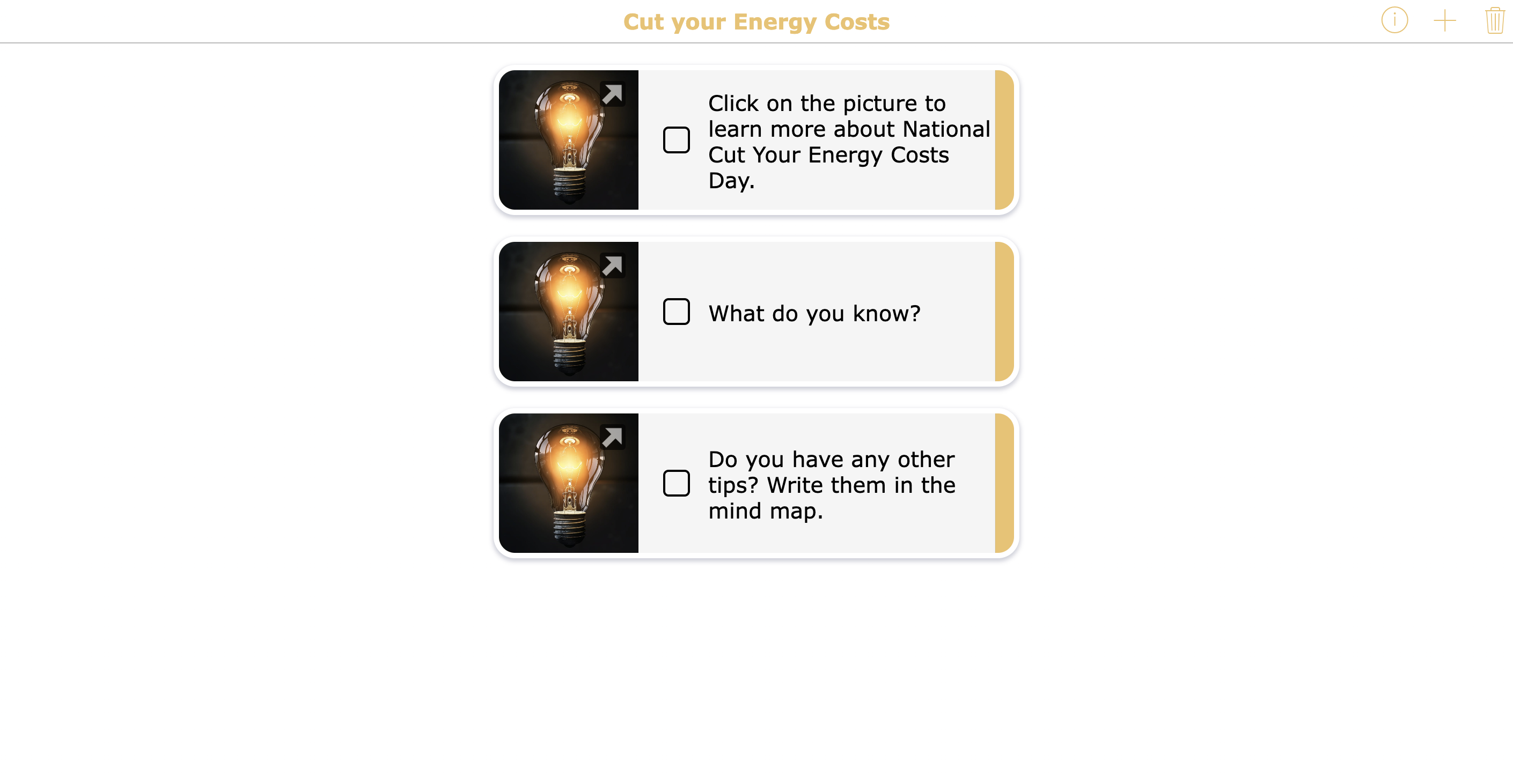
More Lesson Ideas
- Renewable Energy Models: Build models of renewable energy sources like solar panels and wind turbines.
- Energy Audit: Conduct an energy audit of the school to identify ways to reduce consumption.
- Energy Efficiency Workshop: Learn about and practice energy-efficient habits at home and school.
- Guest Speaker: Invite an expert in sustainable energy to discuss current trends and technologies.
- Debate on Energy Sources: Debate the pros and cons of various energy sources.

SDG 8. Decent Work and Economic Growth
Problem
Many people worldwide are working in poor conditions and are not earning a living wage.
Goal
Promote sustained, inclusive, and sustainable economic growth, full and productive employment, and decent work for all.
BookWidgets lesson
Teaching your students about fair trade relates directly to Sustainable Development Goal (SDG) 8, which aims to promote sustained, inclusive, and sustainable economic growth, full and productive employment, and decent work for all. Fairtrade principles ensure that producers receive fair wages and work under safe conditions, which aligns with the goal of decent work. By understanding fair trade, students can appreciate the importance of ethical consumerism and its impact on global economic equity.
This interactive but critical reading lesson on fair trade, followed by questions, helps students critically analyze how fair trade practices support economic growth by providing fair prices and improving livelihoods for workers in developing countries. This educational approach fosters awareness of global economic systems and the role individuals can play in supporting sustainable development. Go check out the lesson activity below 👇
More Lesson Ideas
- Career Day: Host a career day with professionals from various industries to discuss job opportunities.
- Economic Simulation: Create a classroom economy to teach students about jobs, money management, and economic principles.
- Entrepreneurship Project: Encourage students to develop a small business idea and create a business plan.
- Job Shadowing: Arrange opportunities for students to shadow professionals in fields of interest.
- Fair Trade Discussion: Explore the concept of fair trade and its impact on workers globally.

SDG 9. Industry, Innovation, and Infrastructure
Problem
Many regions lack the infrastructure needed to support sustainable industrialization and innovation.
Goal
Build resilient infrastructure, promote inclusive and sustainable industrialization, and foster innovation.
BookWidgets lesson
Teaching about inventions through history is closely linked to Sustainable Development Goal (SDG) 9, which aims to build resilient infrastructure, promote inclusive and sustainable industrialization, and foster innovation. By learning about historical innovations, your students gain insights into the evolution of technology and its impact on society, aligning with the objectives of SDG 9. Understanding how inventions such as the steam engine, electric light bulb, and internet have shaped infrastructure and industry fosters appreciation for the importance of technological progress in achieving sustainable development goals.
Through activities like this digital timeline activity below, students can recognize the interconnectedness of past innovations and their contributions to modern infrastructure and industrial practices, highlighting the role of innovation in advancing sustainable development. In the last part of the timeline, you students need to think critically about another invention associated with building resilient infrastructure and fostering sustainable industrialization.
More Lesson Ideas
- Innovation Challenge: Host a competition where students design solutions to real-world problems.
- Infrastructure Study: Research and present on the infrastructure needs of different countries or communities.
- Field Trip: Visit a local factory or tech company to learn about industry and innovation firsthand.
- STEM Projects: Engage students in STEM projects that focus on building and designing structures.
- Innovation History: Study historical innovations and their impact on society.

SDG 10. Reduced Inequality
Problem
Inequality persists both within and among countries, affecting income, access to education, and opportunities.
Goal
Reduce inequality within and among countries.
BookWidgets lesson
The Black Lives Matter (BLM) movement, founded in 2013, advocates for the end of systemic racism and violence against Black communities. Its goals align with Sustainable Development Goal (SDG) 10, which seeks to reduce inequality within and among countries by promoting social, economic, and political inclusion. BLM’s fight for racial justice echoes the legacy of Martin Luther King Jr., who championed civil rights and equality. Both movements emphasize the importance of addressing systemic disparities to create a more just society. King’s vision and activism laid the groundwork for contemporary efforts like BLM to challenge and dismantle institutionalized discrimination.
This digital lesson is about Martin Luther King Jr. and his journey to equality and justice for everyone.
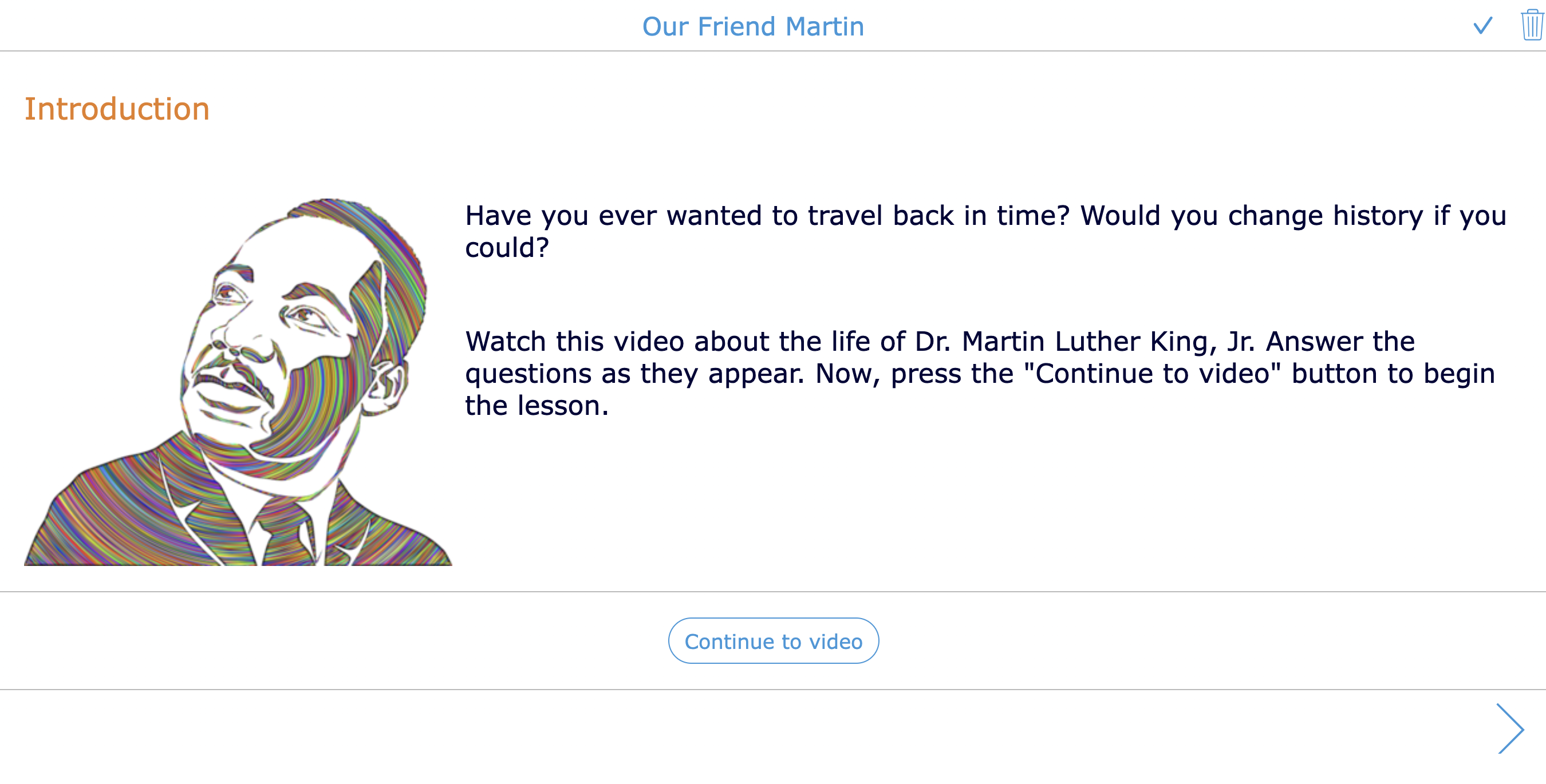
More Lesson Ideas
- Human Rights Education: Teach about human rights and discuss how inequality violates these rights.
- Economic Disparity Simulation: Simulate economic disparities and discuss their impacts.
- Community Outreach: Organize a project to support marginalized groups in the local community.
- Global Inequality Research: Research and present on inequality issues in different parts of the world.
- Inclusive Practices: Develop and implement practices to make the school environment more inclusive.

SDG 11. Sustainable Cities and Communities
Problem
Rapid urbanization is leading to a range of problems, including poor infrastructure, pollution, and inadequate housing.
Goal
Make cities and human settlements inclusive, safe, resilient, and sustainable.
BookWidgets lesson
The best lesson for this is having your students play the game Cities - Skylines II. Apart that my husband is addicted to this game, it really resonates with everything that is related to SDG 11 by allowing your students to design, build, and manage their own virtual, and sustainable cities. Students must play this game to gain practical insights into urban planning and the challenges of creating sustainable communities. Through gameplay, students learn about the complex interplay between infrastructure development, environmental conservation, and social equity, all crucial aspects of SDG 11. By experimenting with different policies and strategies, your students will develop critical thinking and problem-solving skills while exploring the trade-offs inherent in city management. Cities - Skylines II offers a dynamic and immersive learning experience that empowers students to envision and create cities that prioritize sustainability, resilience, and inclusivity.
This BookWidgets checklist activity lists everything your students need to think about when building their sustainable city and community in the game. 👇
More Lesson Ideas
- Urban Planning Project: Have students design a sustainable city model.
- Field Trip: Visit a local community project focused on sustainability.
- Sustainability Audit: Conduct an audit of the school’s sustainability practices.
- Public Transport Study: Research and propose improvements to local public transportation.
- Community Cleanup: Organize a community cleanup event to promote environmental stewardship.

SDG 12. Responsible Consumption and Production
Problem
The world continues to use resources unsustainably, leading to environmental degradation and waste.
Goal
Ensure sustainable consumption and production patterns.
BookWidgets lesson
Goal 12 of the 17 sustainable development goals is called Responsible Consumption and Production Patterns and directly relates to making products, which is what we do. We don’t have an endless supply of resources that are typically used to manufacture products like steel, wood, and plastic. The way we are extracting them, using them, and discarding them is a problem. That’s why we are making products from sustainable materials like bamboo. Check this activity to find out how you and your students can get creative with bamboo! We’ve gathered some nice projects you might do in class when teaching about repurposing and using sustainable resources to create products.
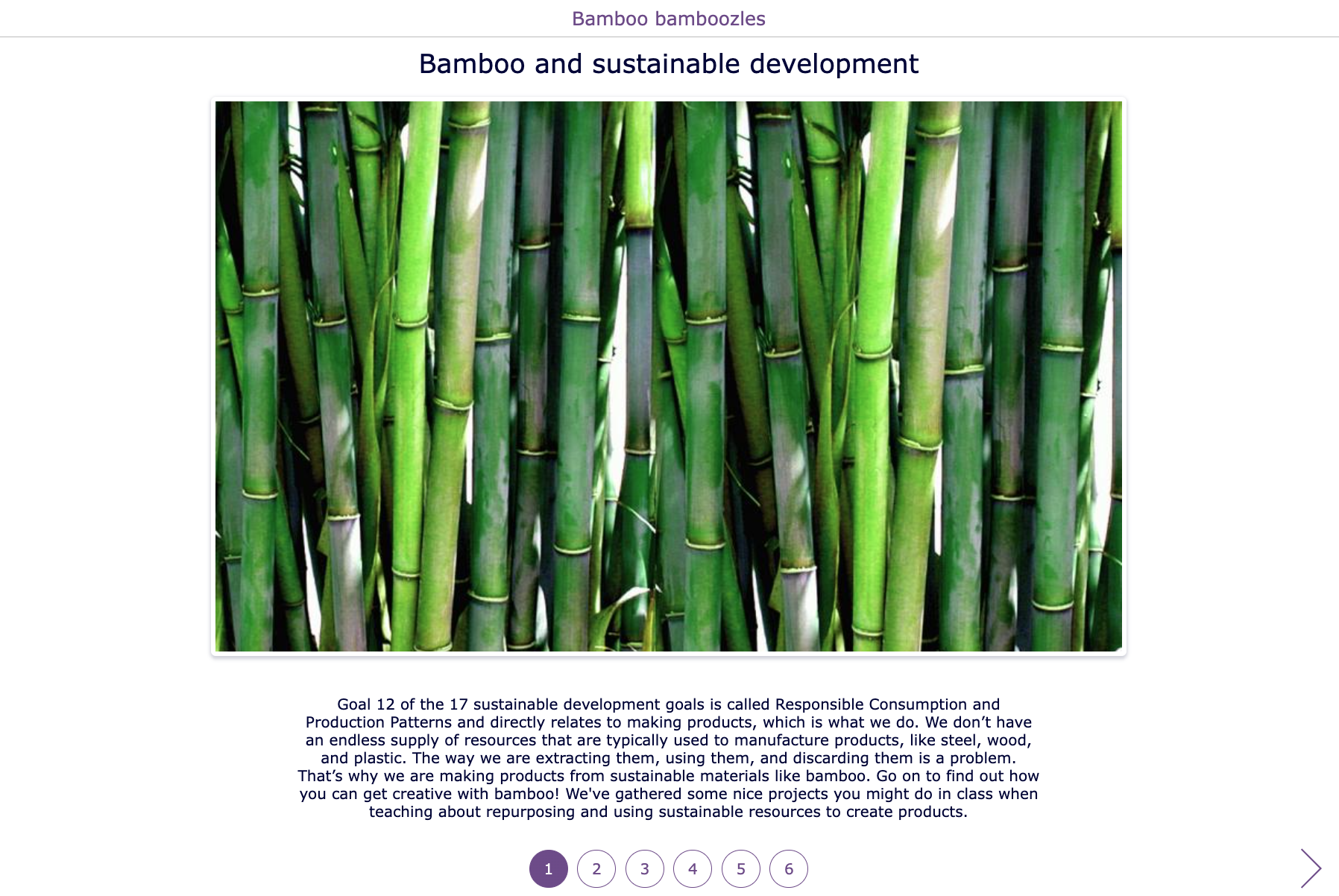
More Lesson Ideas
- Waste Reduction Challenge: Challenge students to reduce waste and track their progress.
- Recycling Project: Create art or practical items from recycled materials.
- Sustainable Product Research: Investigate the life cycle of products and their environmental impact.
- Eco-friendly Alternatives: Research and present eco-friendly alternatives to common products.
- Consumer Awareness Campaign: Develop a campaign to educate peers on responsible consumption.

SDG 13. Climate Action
Problem
Climate change is one of the biggest threats to humanity, affecting weather patterns, sea levels, and ecosystems.
Goal
Take urgent action to combat climate change and its impacts.
BookWidgets lesson
This interactive video quiz is all about understanding climate change and starting a discussion of who is responsible. It’s an interesting classroom conversation or debate. After watching the video, you can ask your students to respresent certain countries in this responsibility discussion. And as this won’t fix anything, it will make them understand the complexity of the climate change issue.
But isn’t this SDG all about climate action? A follow-up lesson series to understand and see what the world and people are already doing could be by entering the “The week” conversation. Register your classroom for “The week”. Your classroom gets together 3 times during a week (hence “The Week”). Every time you watch a 1-hour documentary film episode. And then the heart of the experience: a guided conversation for 30 minutes (or more if you want) to make sense of it all. They won’t be talking about polar bears or ice sheets melting. The Week is about what is likely to happen to us and the people we love in the next 10, 20, or 30 years in parts of North America and Europe. And what we can realistically do about it.
More Lesson Ideas
- Climate Change Research: Research and present on the science and effects of climate change.
- Carbon Footprint Calculator: Calculate and discuss ways to reduce personal carbon footprints.
- Climate Policy Debate: Debate different climate policies and their potential impacts.
- Green Technology Project: Design and build a small green technology project, like a solar oven.
- Awareness Campaign: Create a campaign to raise awareness about climate change and actions to combat it.

SDG 14. Life Below Water
Problem
Oceans are facing severe threats from pollution, overfishing, and climate change, endangering marine ecosystems and biodiversity.
Goal
Conserve and sustainably use the oceans, seas, and marine resources for sustainable development.
BookWidgets lesson
Using this digital Planner widget, you and your students can walk (or swim!) your way through multiple tasks as you learn about World Ocean Day. Learn how you can identify and then protect a blue space. As is true with so many of our activities, the focus is on students not just as consumers of information but producers of knowledge. This lesson plan, focusing on SDG 14, Life Below Water, holds engaging activities, including a word search, a crossword puzzle, drawings, and more! 👇
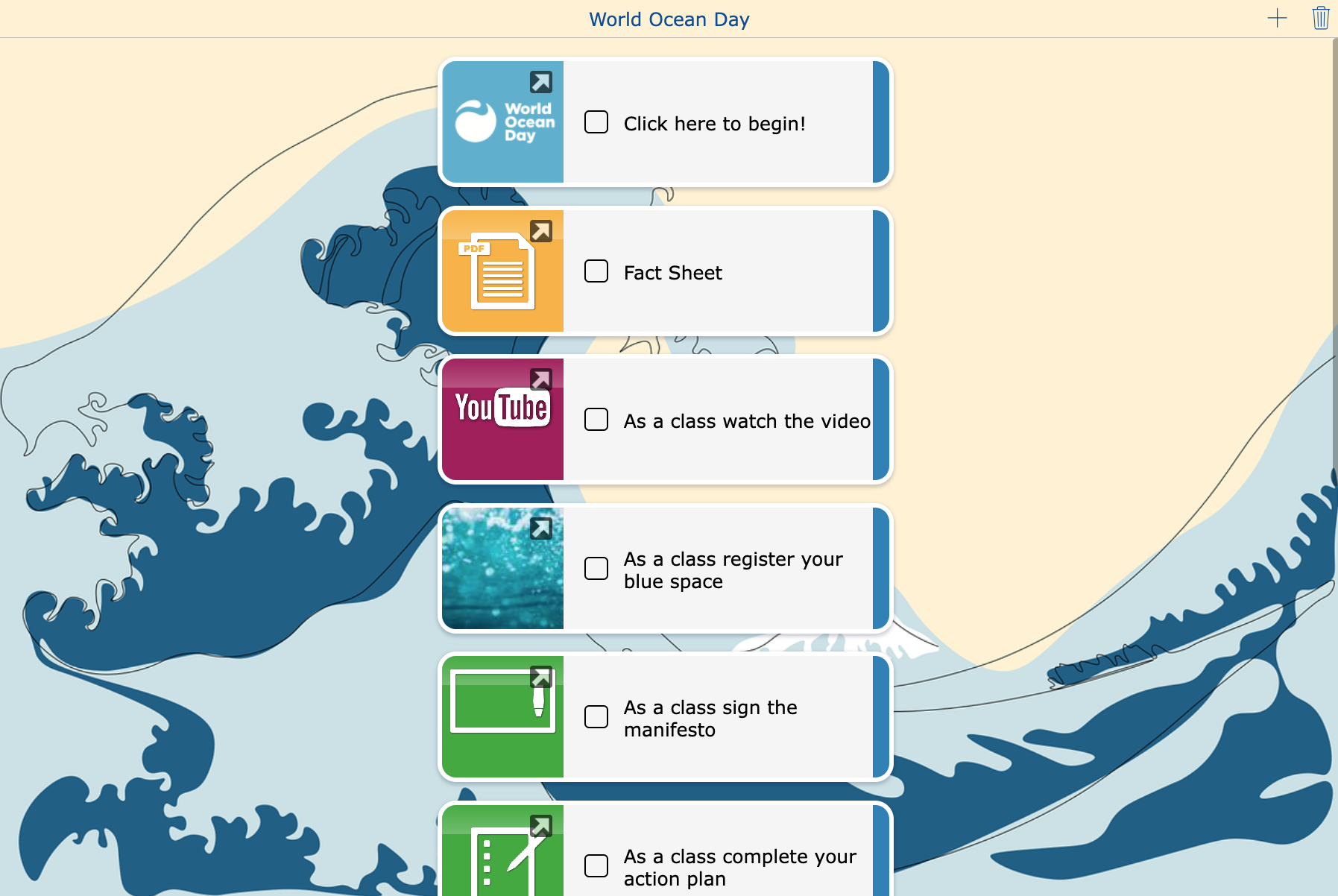
Here’s another shorter activity. This digital activity about whale sharks is directly related to Sustainable Development Goal (SDG) 14, which focuses on life below water. Whale sharks are essential indicators of ocean health, as they depend on healthy marine ecosystems for their survival. Educating your students about whale sharks underscores the importance of conserving marine biodiversity and protecting vulnerable species from threats like overfishing and habitat degradation. This lesson can highlight the need for sustainable fishing practices and the establishment of marine protected areas, which are crucial for the preservation of oceanic life. By raising awareness about whale sharks, you can promote actions that support the conservation and sustainable use of oceans, seas, and marine resources, aligning with the goals of SDG 14. Go check out this lesson! 👇
More Lesson Ideas
- Marine Life Study: Research different marine species and their roles in the ecosystem.
- Ocean Pollution Experiment: Conduct experiments to understand the impact of pollution on marine life.
- Beach Cleanup: Organize a beach or waterway cleanup event.
- Aquarium Visit: Visit a local aquarium to learn about marine conservation efforts.
- Marine Protected Areas: Research and present on the importance of marine protected areas.

SDG 15. Life on Land
Problem
Terrestrial ecosystems are threatened by deforestation, desertification, and biodiversity loss, impacting wildlife and human livelihoods.
Goal
Protect, restore, and promote sustainable use of terrestrial ecosystems, manage forests sustainably, combat desertification, and halt biodiversity loss.
BookWidgets lesson
A lot of species and animals are endangered because of actions humans take. This lesson is about protecting the African elephants and learning more about the differences between the African elephant and the Azian elephant. This Split worksheet lesson activity includes even more activities as your students read through texts, go through flashcards, and do an interactive spot-the-difference activity. Go check it out 👇
Here’s another lesson about honey bees! Teaching about honey bees is directly related to Sustainable Development Goal (SDG) 15, which focuses on life on land. Honey bees play a critical role in pollinating plants, contributing to biodiversity and healthy ecosystems, which are core components of SDG 15. By understanding the importance of honey bees, your students learn to appreciate the need to conserve habitats and support sustainable agricultural practices. Teach your students the threats bees face, such as habitat loss and pesticides, emphasizing the necessity for policies that protect these vital pollinators. Consequently, raising awareness about honey bees helps foster actions that preserve terrestrial ecosystems and biodiversity, aligning with the objectives of SDG 15.
More Lesson Ideas
- Tree Planting: Organize a tree-planting event at the school or in the community.
- Biodiversity Project: Research and present on the biodiversity of a local ecosystem.
- Wildlife Conservation: Study and create posters about endangered species and conservation efforts.
- Field Trip: Visit a local nature reserve or forest to learn about conservation.
- Ecosystem Simulation: Create a classroom simulation to demonstrate how ecosystems function and the impact of human activity.

SDG 16. Peace, Justice, and Strong Institutions
Problem
Conflicts, weak institutions, and limited access to justice hinder sustainable development and the protection of human rights.
Goal
Promote peaceful and inclusive societies for sustainable development, provide access to justice for all, and build effective, accountable, and inclusive institutions at all levels.
BookWidgets lesson
This quiz on the United Nations is directly related to Sustainable Development Goal (SDG) 16, which focuses on promoting peace, justice, and strong institutions. This activity can educate your students about the role of the United Nations in fostering international cooperation, conflict resolution, and the promotion of human rights. Participants gain insight into the importance of effective, accountable, and inclusive institutions by learning about the UN’s efforts in maintaining global peace and security. The quiz can highlight key initiatives and treaties that support justice and the rule of law, emphasizing the UN’s impact on building peaceful societies. Ultimately, this SDG 16 lesson activity fosters a greater understanding of the global efforts needed to achieve peace and justice.
Go check it out! 👇
💡 This inspiring blog post about teaching civics to your students has 10 ready-to-use activities that relate to SDG 16.
More Lesson Ideas
- Conflict Resolution Workshop: Teach students conflict resolution and mediation skills.
- Justice System Study: Research and present on different justice systems around the world.
- Model United Nations: Participate in or organize a Model United Nations simulation.
- Human Rights Campaign: Develop a campaign to promote human rights and social justice.
- Civic Engagement Project: Encourage students to engage with local government and learn about its functions.

SDG 17. Partnerships for the Goals
Problem
Achieving the SDGs requires cooperation and partnerships at global, national, and local levels.
Goal
Strengthen the means of implementation and revitalize the Global Partnership for Sustainable Development.
BookWidgets lesson
Teaching about organizations like WHO and UNICEF is integral to understanding SDG 17: Partnerships for the Goals. By highlighting their collaborative efforts with governments, NGOs, and other stakeholders, students learn the importance of global partnerships in achieving sustainable development.
Through the interactive quiz below, students can explore the diverse roles of these organizations in addressing health, education, social welfare challenges, and more worldwide, fostering a deeper understanding of SDG 17. Understanding the work of these organizations inspires students to engage in future partnerships and contribute to the collective effort towards achieving the Sustainable Development Goals. Through the last task in the quiz, where students need to write an essay on linking an organization to the corresponding SDGs, students develop critical thinking skills and a sense of global citizenship, empowering them to advocate for sustainable development and foster partnerships for positive change.
More Lesson Ideas
- Global Partnership Research: Research and present on successful global partnerships addressing the SDGs.
- Collaborative Projects: Partner with another school to work on a joint SDG project.
- International Pen Pals: Establish pen pal relationships with students in another country to discuss SDGs.
- Fundraising Event: Organize a fundraising event to support an international development project.
- SDG Conference: Host a mini-conference where students present on different SDGs and how to achieve them.
wrap up
By integrating these lesson ideas into your curriculum, you can help students understand the importance of sustainable development and empower them to take action in their communities and beyond. Each goal presents an opportunity to inspire the next generation of global citizens committed to creating a better world.
Want to learn more about creating engaging lesson activities with BookWidgets? ✔️ Follow BookWidgets on X / Twitter, LinkedIn, Instagram, and join our teacher community on Facebook! ✔️ And, be sure to connect with me, Lucie, on LinkedIn! 👋
